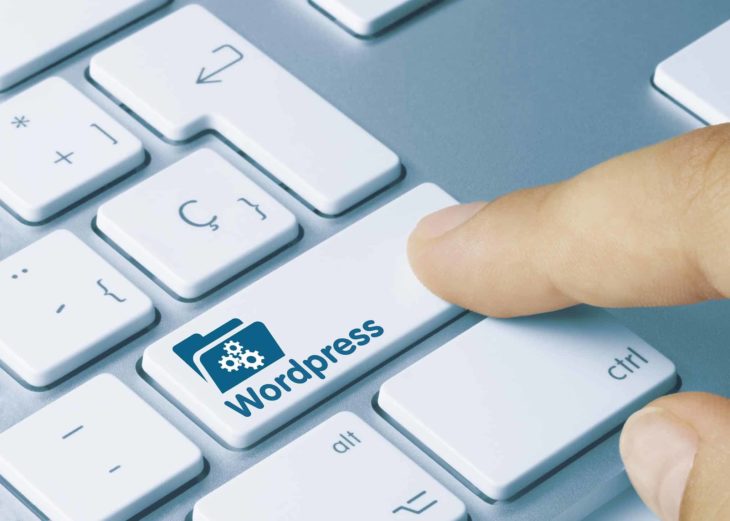Introduction
WordPress has been around since 2003, and it’s still one of the most popular content management systems in the world. It’s free, open-source software that you can use to create your site. However, you’ll need some development experience if you want to customize your site or add new features. If you’re looking for something that’s easy to navigate and learn, Webflow might be a better fit for you: it’s a website builder and CMS platform that gives users everything they need to create any type of website from scratch. For example, Webflow works great for viewing your changes in real-time, Webflow offers an endless number of options while keeping costs low!
WordPress is free, but the cost is development experience
With the WordPress platform, you can build a website for free, but you’ll still need development experience (or know someone who does). A great web designer will know how to use WordPress and be able to build your site—but they won’t be able to do it in their sleep. The same goes for any other platform: if it’s not their primary focus they’re less likely to do work in that area.
Webflow is a website builder and CMS platform.
Webflow is a website builder and CMS platform. It’s easy to use, and it has lots of features.
Webflow is a paid service that ranges from $12 per month to $99 per month (at the time of this writing).
Webflow has two free plans: Starter and Standard. The Starter plan is limited in several ways; it limits you to 1GB of bandwidth per month, restricts your portfolio pages and galleries, prevents you from adding custom fonts or colors to your site unless they’re included in their “free” theme library, doesn’t allow any custom code or plugins on your site unless they’re approved by Webflow staff first (and even then only after they’ve reviewed all potential issues that might arise), etcetera…
Webflow is a paid service, but easier to navigate and create. Some development experience is required.
Webflow is a paid service, but it’s easier to navigate and create. If you have some development experience, this may be the best option for you. Webflow is both a website builder and CMS platform: it allows you to create responsive websites with drag-and-drop ease and minimal coding knowledge. As with other tools that require no HTML knowledge, however, Webflow requires some development experience in order to make adjustments (margin, padding, etc) or add custom elements like buttons and sliders.
Also, note that although Webflow has an intuitive interface—it’s basically just like using WordPress except without the need for any coding—you can’t just drop in any old design; instead of uploading files from your computer or Google Drive as you might do with Shopify or Squarespace (for example), you’ll have to use their drag-and-drop builder tool where everything happens on screen rather than off your hard drive or cloud storage system. This makes navigation easier because there are fewer places where things can go wrong when creating content without knowing how exactly they work yet still being able to see results immediately after making changes!
With WordPress, you have tons of plugins to choose from.
When it comes to WordPress, you have tons of plugins to choose from. For example, if you want a simple contact form on your website or to add Google Analytics tracking code, there are thousands of free plugins available in the WordPress Plugin Directory. You can also find premium plugins that require a license (for a fee) because they offer more advanced features.
However, some premium plugins are poorly built and can cause serious problems for your site. So be careful when installing any plugin!
How advanced do you want your site to be?
If you use WordPress, then you have to be a bit more advanced when it comes to coding. This is because WordPress requires some coding knowledge in order to get your site up and running. WordPress also allows for custom functionality, so the sky is the limit here.
Webflow, however, is a drag-and-drop website builder that allows you to make beautiful yet fully functional websites on your own without any prior knowledge of code at all. You just need to be able to drag elements around until they look how you want them to!
There isn’t one clear winner, both will serve your needs.
There isn’t one clear winner, both will serve your needs.
When it comes down to it, both WordPress and Webflow are excellent platforms for creating websites. Both have pros and cons and you need to consider what your specific needs are before deciding which one is best for your project.
If you’re building a larger site with more dynamic content like news articles or product descriptions that get updated frequently, then WordPress may be better suited to the task. However, if you only need to create a small static site with infrequent updates (like an app landing page) then Webflow might be more suitable.
Conclusion
We hope this article helped you understand the pros and cons of both WordPress and Webflow. Each has its own benefits, so it really comes down to what kind of website you want to create. If you’re just starting out with an idea for a business website, we recommend going with Webflow. It has more resources available than any other platform out there today—even better ones than Webflow! If however, your needs are more advanced then WordPress may be a better fit for you since it offers more flexibility in how things can work and function. In conclusion: both platforms offer great solutions for creating online presence; choose wisely!

